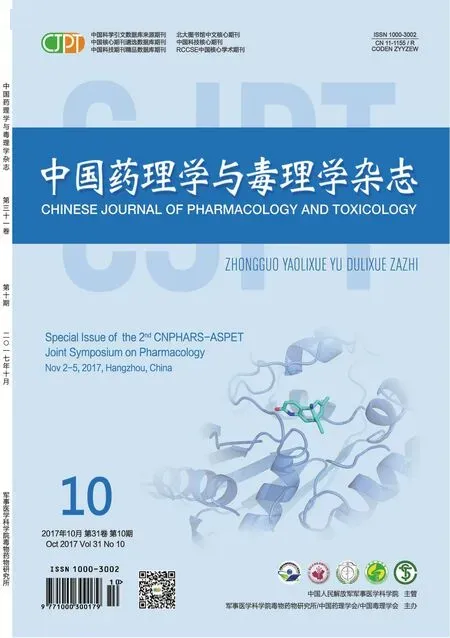PID1,a new tumor-promoting gene in insulin resistance mediated acceleration of hepatocellular carcinoma development and progression
Ming XIANG,Qian-qian XU,Na XU,Zhong-shi ZHOU,Ya-li TUO,Cheng TIAN
(Department of Pharmacology,School of Pharmacy,Tongji Medical College,Huazhong University of Science and Technology,Wuhan 430030,China)
T1-38
PID1,a new tumor-promoting gene in insulin resistance mediated acceleration of hepatocellular carcinoma development and progression
Ming XIANG,Qian-qian XU,Na XU,Zhong-shi ZHOU,Ya-li TUO,Cheng TIAN
(Department of Pharmacology,School of Pharmacy,Tongji Medical College,Huazhong University of Science and Technology,Wuhan 430030,China)
OBJECTIVETo investigate the effect of phosphotyrosine interaction domain containing 1(PID1,NYGGF4)on promotion of IR and HCC,and explore its underlying mechanisms.METHODSLentivirus were used to mediate the knockdown of PID1 in HFD induced IR mouse model as well as ob/ob mice.Intraperitoneal glucose and insulin tolerance were performed 4 weeks after lentivirus injection.Hydrodynamics-based transfection was applied to inducethe liver specific overexpression of PID1.Flow cytometry was exerted to detect the proportion and function of immune cells.qRT-PCR and Western blot were used to detect the expression of downstream pathways of PID1.Immunoprecipitation was used to determine the receptor of PID1.Chromatin immunoprecipitation(ChIP)was operated to measure the modification of H3K4me3 of PID1 promoter.RESULTSPID1 restriction improved insulin resistance,hyperglycemia and fatty liver.Conversely,hepatic knockdown of PID1 attenuated liver xenografted tumor growth.Moreover,PID1 liver-specific protooncogenes via hydrodynamics-based transfection established a primary hepatocellular carcinoma mouse model,induced an immunosuppressive environment,with the reduction of CD3+,CD4+,CD8+T cells,retarded maturation of dendritic cells(DCs),pronounced differentiation of regulatory T cells(Tregs),and recruitment of MDSC.In addition,PID1 overexpression activated proliferation related genes,promoted anti-inflammatory genes,suppressed pro-inflammatory genes,induced glycolysis and lipid metabolism genes to facilitate tumorigenesis in liver.Importantly,PID1 exerted its tumor-promoting function through binding to epidermal growth factor receptor(EGFR)and activation of downstream MAPK pathway.As such,PID1 exist trimethylation of histone H3 at lysine 4(H3K4me3)modification and IR up-regulated the expression of PID1 by activation the H3K4me3 modification.CONCLUSIONPID1 is a new gene that exerts both liver cancer-promoting and insulin resistance inducing function.IR accelerates liver cancer development and progression partially dependent on the activation of PID1.
PID1;insulin resistance;hepatocellular carcinoma;cancer promoting;immunosup?pression
The project supported by National Natural Science Foundation of China(81673440,81273521,and 91229114)
Ming XIANG,Tel:00862783692745,E-mail:xiangming@mails.tjmu.edu.cn
 中國(guó)藥理學(xué)與毒理學(xué)雜志2017年10期
中國(guó)藥理學(xué)與毒理學(xué)雜志2017年10期
- 中國(guó)藥理學(xué)與毒理學(xué)雜志的其它文章
- Pharmacological study on traditional Chinese medicine and natural product in China
- GPCRomics:tissue and cellular GPCR expression identifies new therapeutic targets
- Direction of new drug research:soft regulation of inflammatory immune responses
- Targeting Gprotein-coupled receptors for the treatment of autoimmune diseases
- Arrestin mediated GPCR biased signaling and its application in new drug discovery
- Identification of a novel target for cancer and anti-fibrotic therapy
